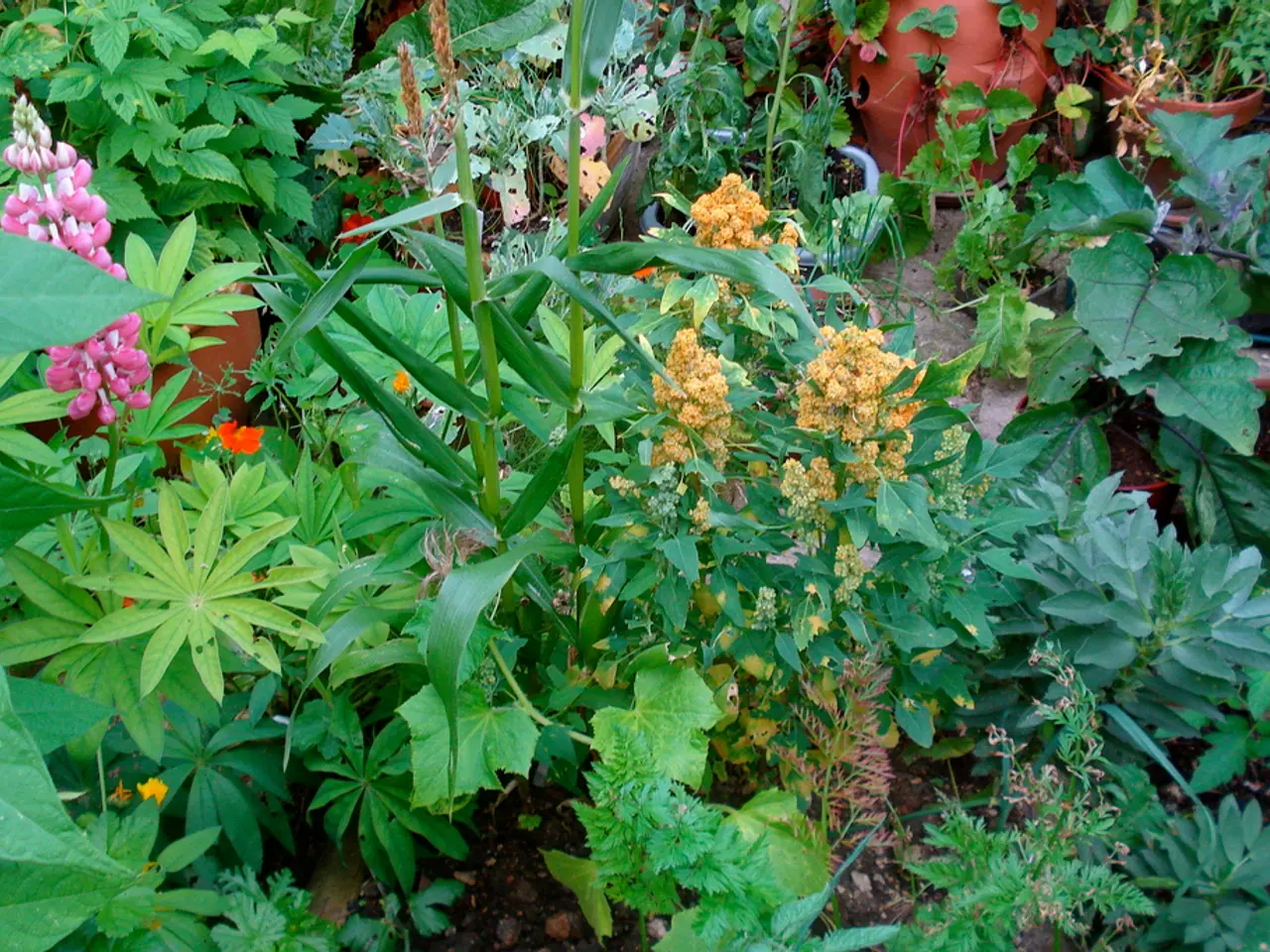Giant Corpse Flower Reaches Height of 12 Feet (or 3.7 Meters)
In the captivating world of botanical wonders, one plant stands out for its extraordinary spectacle and unique characteristics - the corpse flower, or Amorphophallus titanum. This rare and fascinating plant is renowned for its pungent smell, reminiscent of rotting fish, rotten meat, and smelly feet, which is a crucial part of its life cycle.
Unlike most flowering plants, the corpse flower does not rely on bees or butterflies for pollination. Instead, it attracts pollinators such as flies and carrion beetles, essential for its reproduction. The heating process known as thermogenesis plays a significant role in this attraction.
Corpse flowers, such as the Amorphophallus titanum, utilize thermogenesis to raise the temperature of their inflorescence significantly above ambient levels. This heat release enhances the evaporation of compounds like dimethyl disulfide and other sulfur-containing chemicals responsible for the characteristic putrid smell resembling decaying animal flesh. By warming these chemicals, the plant ensures their scent travels further and is more intense, improving the flower’s ability to attract the specific pollinators that seek out carrion.
When in bloom, the corpse flower produces one of the largest flowers in the world. However, the blooming period is short-lived, with the aim of maximizing its chances of pollination. The prediction of the next peak bloom is based on tracking its growth, including when the spathe begins to unfurl and a new leaf grows. The female flowers open first, followed by the release of pollen from the male flowers the following day.
The unpredictable bloom cycle of the corpse flower means visitors often have to wait years for a single seedling to mature and bloom. To preserve the unique corpse flower, botanic garden conservation efforts focus on growing living plants in controlled environments. Many botanic gardens, including the Chicago Botanic Garden, the New York Botanical Garden, and The Huntington in San Marino, California, monitor the blooming frequency of corpse flowers.
The gene pool of corpse flowers is protected by botanic gardens, allowing for cross-pollination between specimens. This is crucial for predicting when the next peak bloom will occur and for studying the growth of this unique plant. The conservation efforts of botanic gardens aim to help conserve the endangered plant, as its native forest habitat is shrinking due to oil palm plantations and deforestation.
The blooming of a corpse flower in a botanic garden helps to study and learn more about this unique plant. By understanding the process of thermogenesis and the role it plays in the plant's reproduction, scientists can gain valuable insights into the world of botany and plant evolution. The corpse flower's rare and fascinating blooms continue to captivate plant enthusiasts worldwide, making it a must-see attraction in many botanic gardens.
Read also:
- Eight strategies for promoting restful slumber in individuals with hypertrophic cardiomyopathy
- Exploring the Strength of Minimally Digestible Diets: A Roadmap to Gastrointestinal Healing
- Secondhand Smoke: Understanding its Nature, Impact on Health, and Additional Facts
- Overseeing and addressing seizure-induced high blood pressure complications in pregnancy, known as eclampsia







